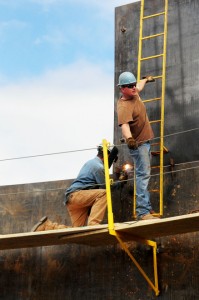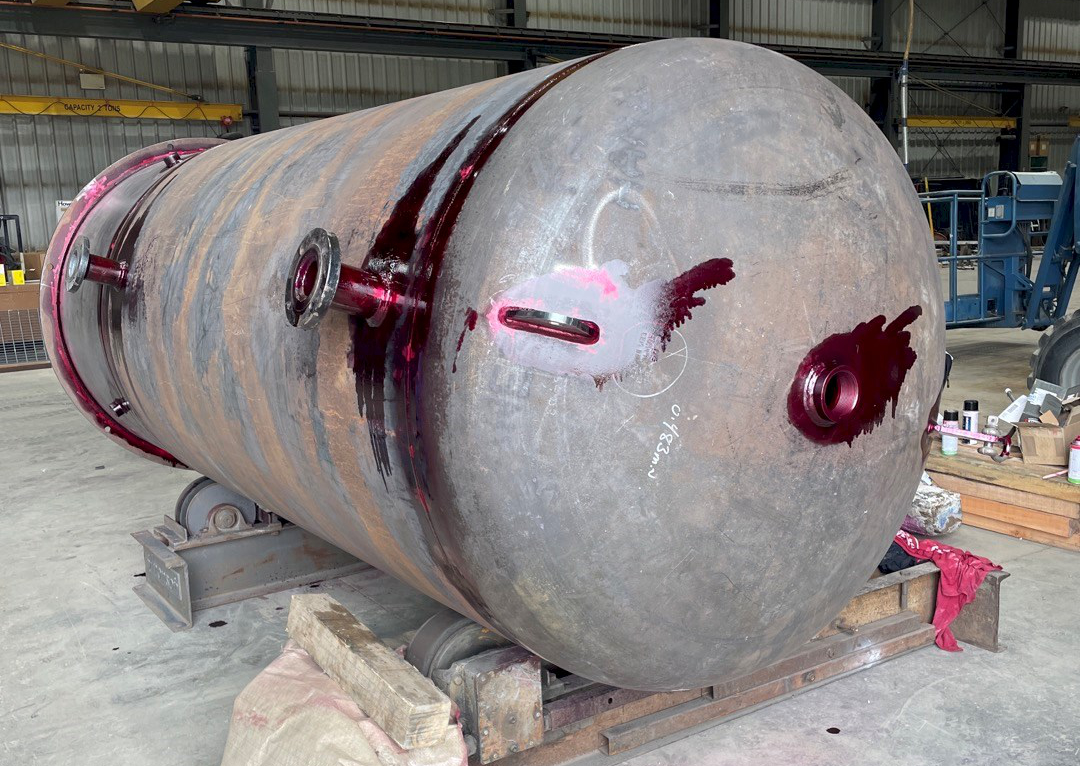A Detailed Introduction of Container Welding Inspection Specifications and Methodologies for Improved Weld Top Quality and Performance
The importance of welding examination requirements in the production of containers can not be overstated, as they work as the backbone for making sure weld honesty and functional reliability. Different assessment strategies, consisting of aesthetic assessments and advanced non-destructive testing techniques, are critical in determining possible flaws that can compromise performance. Additionally, sticking to regulatory standards not only boosts weld quality however likewise reduces the danger of expensive failures. As we check out the subtleties of these approaches, it comes to be vital to take into consideration how an organized method can transform current practices and bring about significant enhancements in results.
Relevance of Welding Examination Specifications

Welding assessment standards include a variety of requirements, consisting of material requirements, welding treatments, and qualifications of personnel entailed in the welding process. By enforcing these requirements, organizations can methodically determine and rectify possible problems, thereby minimizing the possibility of pricey repair services or devastating failings. Extensive examination methods cultivate a culture of liability and precision, motivating welders to maintain high levels of workmanship.

Usual Welding Evaluation Strategies


Ultrasonic Checking (UT) is an additional widespread strategy, making use of high-frequency audio waves to identify inner problems that may not be visible on the surface. This approach is especially efficient for identifying gaps or incorporations within the weld steel. Magnetic Particle Testing (MT) is additionally commonly utilized, especially for ferromagnetic products, as it exposes surface and near-surface defects via the application of magnetic areas and ferrous particles.
In Addition, Fluid Penetrant Testing (PT) detects surface-breaking issues by applying a penetrant to the weld and afterwards making use of a designer to extract the penetrant. Each of these strategies adds to a comprehensive examination technique, ensuring that welds fulfill the strict quality requirements required in container building.
Governing Specifications and Conformity
Regulative standards and conformity are essential elements in ensuring the try here safety and security and reliability of bonded structures in storage tank construction - Tank Welding Inspection. These criteria serve to develop minimum requirements for material residential properties, welding treatments, and examination methods, thereby lowering the danger of architectural failures and improving general efficiency
Key organizations, such as the American Culture of Mechanical Designers (ASME) and the American Welding Society (AWS), supply standards that are widely embraced in the sector. Compliance with these requirements not just makes certain adherence to best methods yet also meets legal and legal commitments, guarding the passions of stakeholders.
Regulative bodies typically mandate adherence to particular codes, such as ASME Code Section IX for welding credentials and API 650 for bonded tanks. These codes outline needs for welding methods, qualifications of personnel, and testing techniques to confirm weld stability.
Regular audits and examinations are important to maintaining conformity, as they aid recognize deviations from developed standards. Non-compliance can cause considerable penalties, job delays, and safety and security risks. Hence, a robust understanding of governing criteria and a dedication to conformity are vital in accomplishing top notch and long lasting bonded storage tank structures.
Non-Destructive Evaluating Methods
How can the honesty of bonded structures be guaranteed without causing damage? Non-destructive screening (NDT) approaches use a robust service, enabling assessors to review weld high quality without compromising the product - Tank Welding Inspection. Amongst the most typical NDT techniques are ultrasonic screening (UT), radiographic screening (RT), magnetic bit screening (MT), and dye penetrant testing (PT)
Radiographic screening entails passing X-rays or gamma rays with the weld, creating photos that expose architectural defects such as splits or voids. This approach is indispensable for assessing the stability of intricate welds.
Magnetic bit screening is suited for ferromagnetic products, where electromagnetic fields expose surface area and near-surface gaps. Color penetrant testing makes use of a liquid dye to highlight surface-breaking imperfections, making it an efficient approach for non-porous materials.
Each of these NDT techniques has distinctive advantages, enabling thorough assessments customized to details materials and welding procedures. By applying these techniques, markets can make certain the reliability and security of bonded frameworks, ultimately improving total efficiency.
Enhancing Weld High Quality Via Evaluation
Reliable inspection plays a critical duty in boosting weld quality, functioning as an essential checkpoint in the fabrication process. By identifying possible problems early, inspections minimize the danger of compromised architectural integrity and make certain conformity with industry criteria. Employing a mix of visual have a peek at this website exams, non-destructive testing (NDT) methods, and mechanical evaluations, inspectors can find issues such as porosity, splits, and incomplete blend.
Executing a durable evaluation method not only boosts the overall high quality of welds but likewise cultivates a culture of liability among welders and producers. Regular training and certification of inspection employees make certain that they are outfitted with the needed skills to recognize and address possible troubles successfully. This positive method minimizes rework and linked expenses, ultimately adding to forecast effectiveness.
Furthermore, comprehensive documents of assessment findings provides beneficial insights into repeating problems, promoting continual enhancement in welding practices. By leveraging advanced modern technologies, such as automated ultrasonic screening or electronic radiography, weld quality can be improved through more useful source exact assessments. To conclude, a strenuous evaluation procedure is vital in achieving high-grade welds, making sure safety, dependability, and longevity in storage tank fabrication.
Final Thought
In final thought, the execution of rigorous tank welding evaluation requirements and methods is crucial for ensuring weld integrity and performance. By utilizing a mix of visual assessments, non-destructive testing approaches, and adherence to governing criteria, companies can properly recognize and minimize prospective issues.